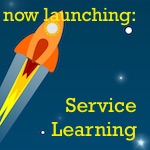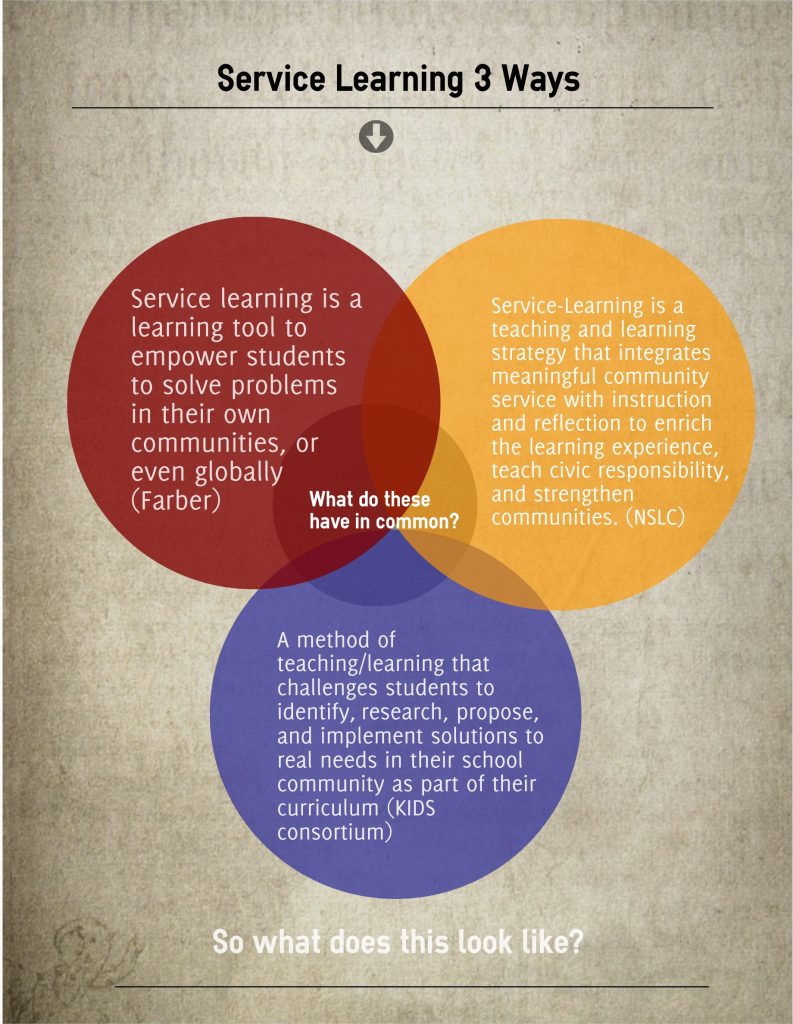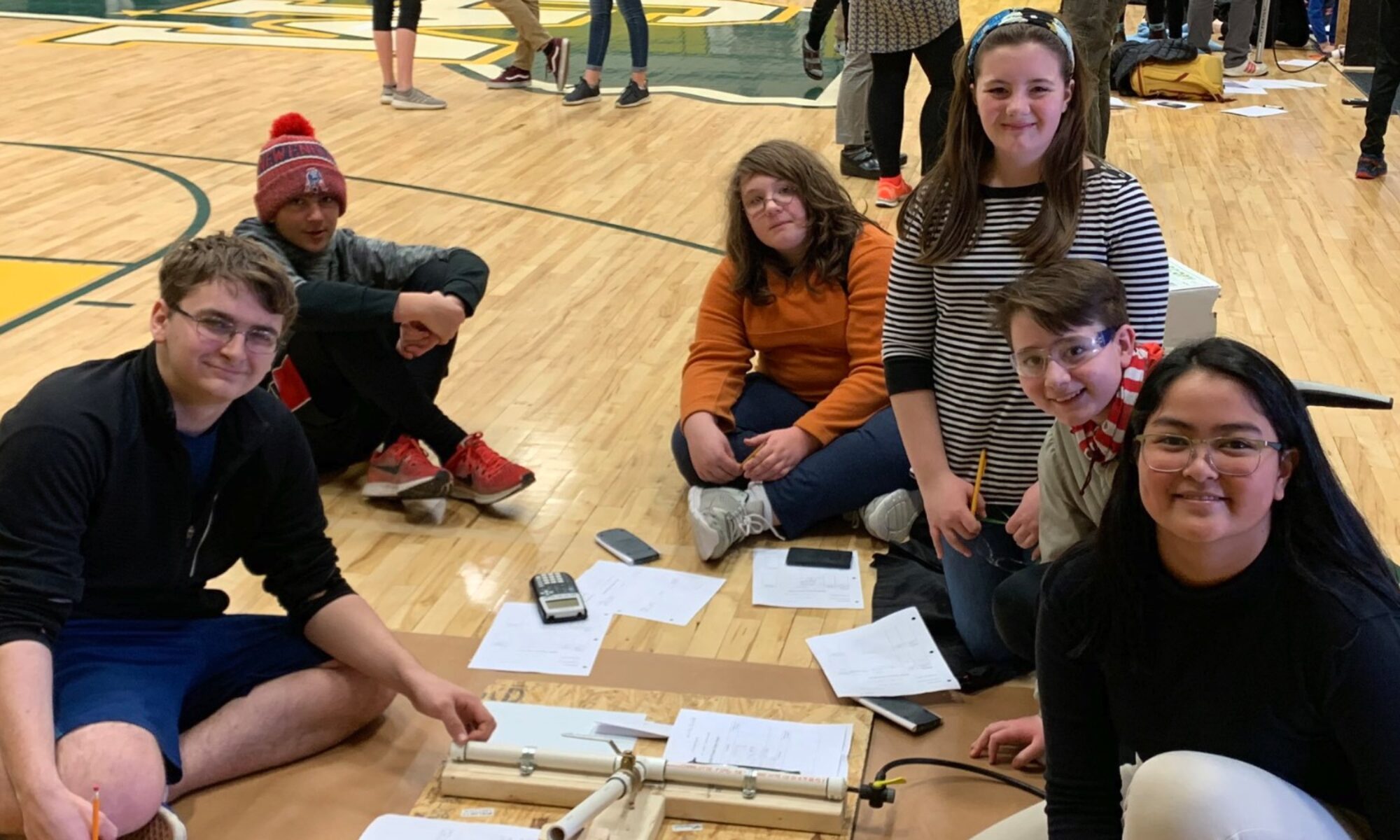How to get started with service learning
 Service learning can play a key role in middle level curriculum, yet it can seem daunting to many educators. But it’s so rewarding for students and valuable to the community, and most of all, easy to get started with.
Service learning can play a key role in middle level curriculum, yet it can seem daunting to many educators. But it’s so rewarding for students and valuable to the community, and most of all, easy to get started with.
Let’s take a look.
What is service learning, anyway?

Service learning is:
- a learning tool to empower students to solve problems in their own communities, or even globally;
- a teaching and learning strategy that integrates meaningful community service with instruction and reflection to enrich the learning experience;
- a method of teaching/learning that challenges students to identify, research, propose, and implement solutions to real needs in their school community as part of their curriculum.
What does service learning really look like?
Students learn about challenges in their own communities and beyond, and devise a plan in teams to work toward solutions. It can be in any topic, include Common Core and district goals, while promoting student voice and problem solving.
How is service learning different than project-based learning?
Both of these pedagogies, at their very best (think Gold Standard PBL, and Shelley Billig’s high quality service learning), have a lot in common. They both invite students to explore their own interests; ask relevant and meaningful questions; engage in prolonged inquiry, research and reflection, assessment and feedback; and ask students to create something that is of service to the world and share it with an authentic audience. One big difference is that PBL can be a simulation or model, where service learning is rooted in direct action, planned by students. (from this post at the Buck Institute!)
But how do you do service learning?
C’mon. Let’s do this together.
- Reflect. Is service learning, project based learning, or community service happening already at your school? Brainstorm a list of what is already happening. See what you can extend, enhance, or begin with.
- Establish goals. What are some goals for service your team has in mind. Increased engagement? Short or long term projects? Cultivating leadership, or fighting bullying? Brainstorm possible outcomes and goals.
- Uncover possible problems for students to explore. Brainstorm possible areas of problems in the school or community that could be discovered by students. Where can they engage and begin to plan?
- Find community partners. (not as scary as it seems): What community partners exist? Who could be your allies? If new to a school, find a community guru (usually the administrative assistant or custodian) who knows the history of the school and many people in the community. This is a critical resource for materials, history, ideas and connections. Consider bringing this person coffee.
- Brainstorm. A list of possible projects in possible classes, subjects, or integrated project times. Genius hours can also be expanded to have a service component.
- Plan: See this service learning planning template and checklist, portfolio cover sheet, student timeline, and reflection ideas for inspiration.
- Ponder authentic sharing opportunities. Think about how you want to create authentic sharing opportunities with and for the community (expos, learning fairs, presentations, showcases). What would work best in your schedule and school context?
- Consider flexible grouping for the project. Service learning teams usually work best with 3-4 team members.
- Design reflection opportunities. Reflection is a critical part of service learning. It is where the learning often takes place and can become part of your formative assessment. See these reflection question ideas.
- Organize the project. You can use this tool from BIE to plan it (you have to create an account, it’s free, and the site has fabulous resources). Or visit this template and resource to see if it might work for you and your students. Here is the Google Doc format so you can fill it in: 6 steps to service/project based learning.
- Dive deeper. My book, Change the World with Service Learning is loaded with resources, examples, project ideas and rubrics teachers can adapt and use right away.
Why do service learning?
The benefits are well documented. From my new research on how service learning is developmentally appropriate for middle level students, to a growing chorus of other academic researchers, there are a wide range of benefits for students.
What are your tips for doing service learning, project-based learning, or community-based learning?
Please share your thoughts in the comments.


I have recently developed a Service Learning Program proposal that I am presenting to my teacher. It’s based on supporting and providing CPR and First Responder skills to the community. I am concerned about the reality of the fundraising portion and then the balance of time in accomplishing goals. There are a couple goals I’d like to accomplish so it’s hard to cut anything out. I’m going to be flexible in the strategy so the program achieves some main objectives but doesn’t come to a stand still if each target isn’t hit.